“When I started collecting, the cut-off for desirability was 1965 – anything after that, forget it. That’s all changed completely”: The Fender Stratocaster is the most famous electric guitar of all time – but what was the greatest Strat ever built?
The Stratocaster is the original guitar for all seasons. But which version represents the pinnacle of its evolution? We take a deep dive into Leo’s masterpiece, in the company of experts, to try to find an answer…
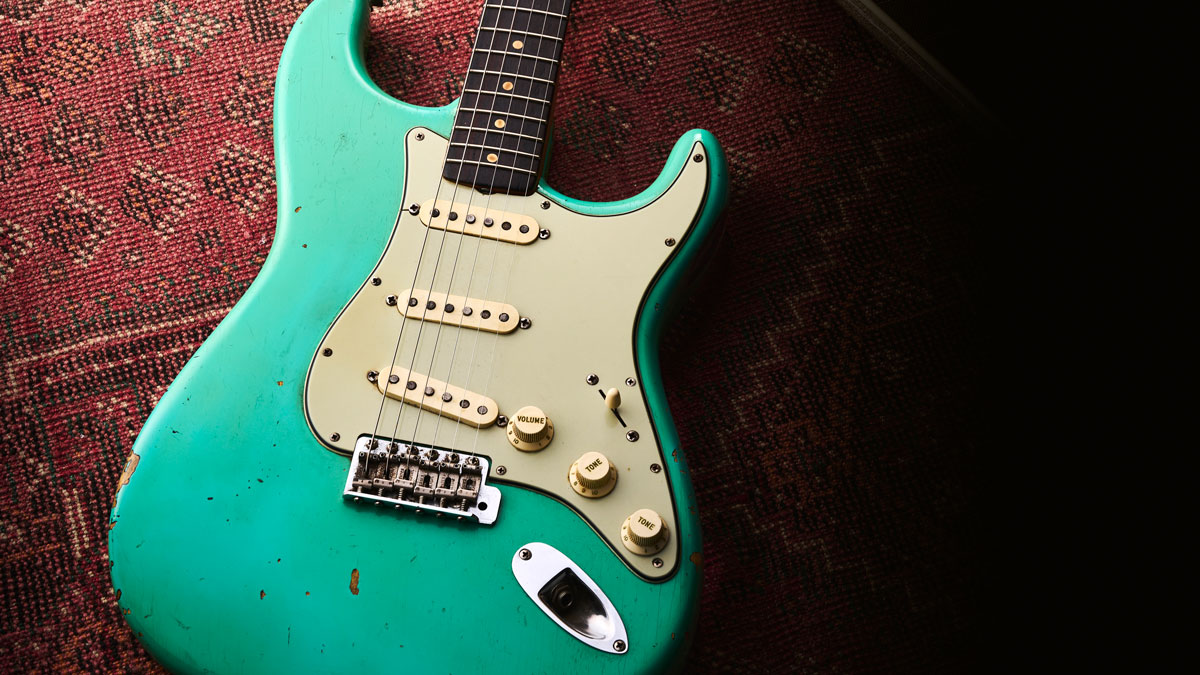
Ever since its launch in 1954, the Fender Stratocaster has been, at once, the most recognisable electric guitar in the world and the most mercurial. While Telecasters tend to deliver a somewhat familiar ride every time you pick one up, when you try a Strat for the first time it’s harder to predict whether it will be light, pristine and bright – or dark, warm and gutsy. That’s partly because, beneath the skin, the model has changed like a chameleon through the different phases in its evolution.
With the model’s eighth decade in production just around the corner, we began thinking about whether it’s possible to crown a particular point in the Strat’s storied life where it had reached perfection, the peak of its evolution as a design.
A point before which everything was a work in progress – and after which everything was merely a variation on a theme. To help us answer this slippery question, we enlisted the help of some true Strat aficionados to try to identify the point at which the model reached its apex – if that exists in any meaningful sense – while gaining fresh insights into this timeless design.
We’re going to exclude reissues from the reckoning, since they are essentially just modified copies of the original kit. Here, we’re going to look at the seminal early decades of the Strat’s evolution and see if we can chart where the original seed of Strat design reached its zenith.
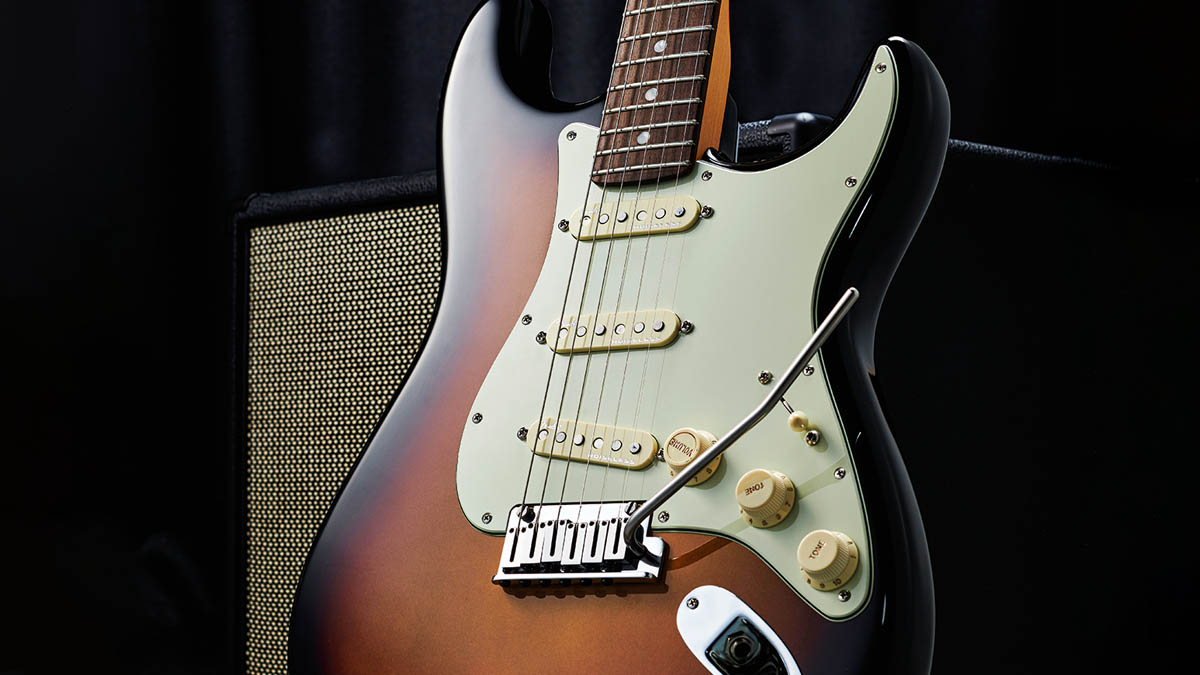
In the beginning
When considering any classic model of guitar, there’s usually special reverence for the first of the breed – be it a 1950 Broadcaster or a 1952 Gibson Les Paul Model. But while such guitars are undoubtedly historic, it’s also fair to say that rarely do they represent a fully mature design. The Les Paul, for example, would take half a decade to reach the archetypal maple/mahogany, twin-humbucker format that continues to the present, and even then it took until the 1980s for Gibson to stop tinkering with those fundamentals.
To an extent, the same could be said of the Strat in 1954. The ash-body, two-tone sunburst model that Fender debuted is undoubtedly a historic design. But it isn’t fully representative of what the Strat was to become, as Mike Long, owner of vintage guitar specialist ATB Guitars, argues.
“’54s are a breed apart,” Mike reflects. “I mean, it’s not just that – it’s what month in ’54 a particular guitar was made as well, it’s that anal. Because they vary quite significantly, in small details, from the very early ’54s, to the mid-’54 examples to the late ’54s. Generally, 1954 Strats tend to sell for an awful lot more money [than other years] and they’re very desirable. But I personally don’t think they’re the best Strats. We’ve had a few ’54s; they’re good, but I think they have more appeal to the collector, rather than the player.”
Get The Pick Newsletter
All the latest guitar news, interviews, lessons, reviews, deals and more, direct to your inbox!
Guitarist contributor and vintage restoration expert Huw Price agrees, arguing that many features that initially appeared on 1954 Strats were abandoned in the months that followed the model’s launch.
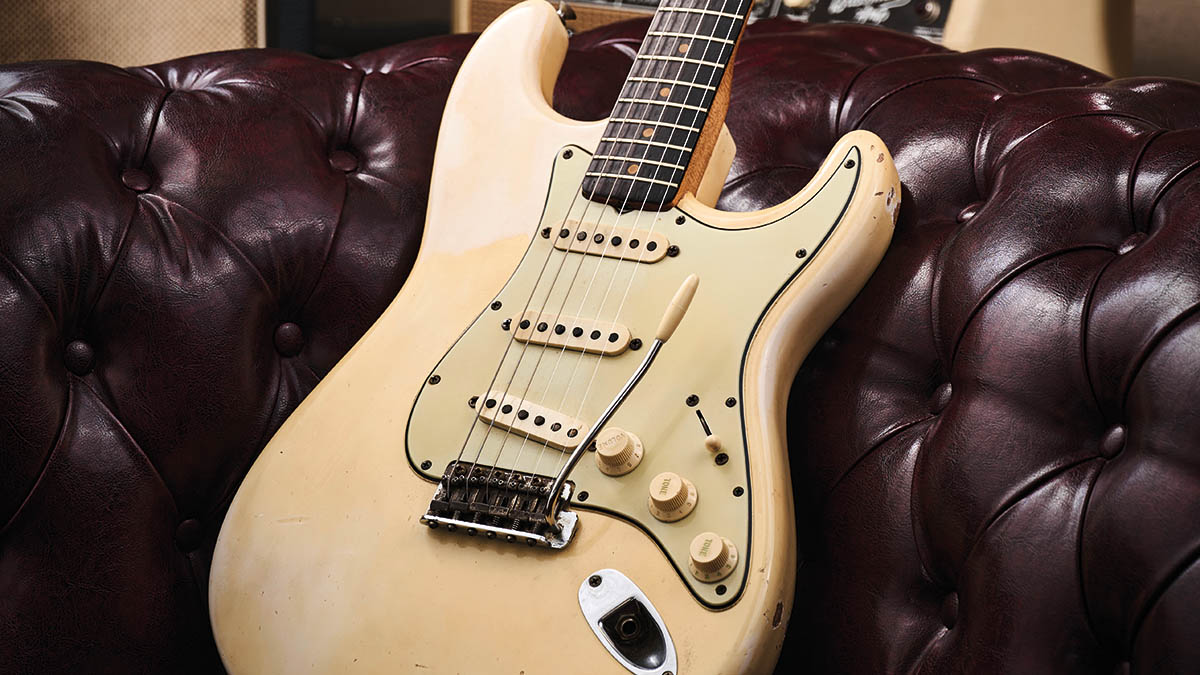
“The 1954 Strats that I’ve played had quite bulbous necks. They didn’t seem as refined as the Telecasters from that era, in terms of the playing feel,” Huw tells us. “And with the early ’54s, they hadn’t really settled the pickup design, either. I think they were using Alnico III magnets and they also had wider slugs as well. So the pickups were still a work in progress.
“The very earliest ones supposedly had 100k control pots, too,” he says, explaining why 1954 Strats can sound quite different from what we might expect of Strats today.
Andrew Raymond, owner of Vintage ‘n’ Rare Guitars in Bath, UK, argues that it didn’t take long for Fender to respond to customer feedback and rejig the specs into something that feels like the first truly classic Strat – around a year, by his reckoning.
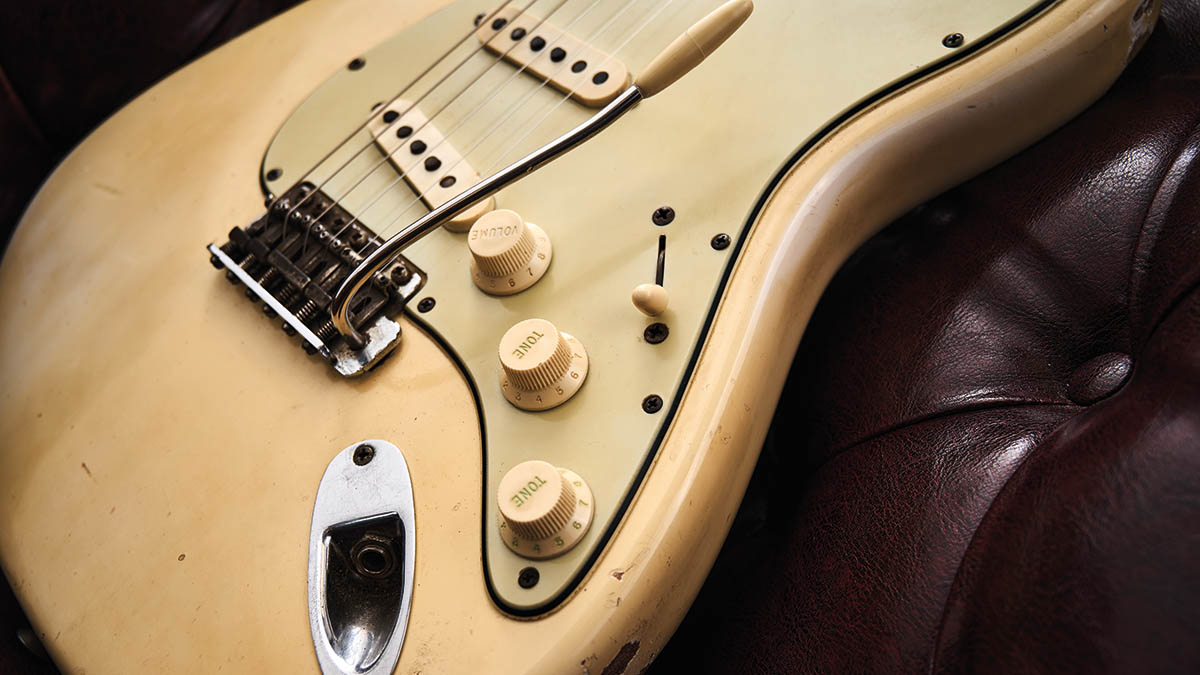
“’54s are sort of on their own, really, because they’re more or less prototypes in a way, and the necks aren’t that nice on them – very round,” Andrew says. “But 1955 is a great year, I think. When Joe Bonamassa played my ‘Grainger’ ’Burst at Cardiff seven years ago, I looked at his guitar rack and I saw a ’55 Strat and said, ‘Can I have a go?’ and he said, ‘Yeah, no problem.’ Playing it, I thought, ‘This neck is fantastic.’
However, Huw Price sounds a note of caution regarding the playability of fully original mid-50s Fenders.
“It’s important to realise that the frets on a lot of early Fenders, probably up to about ’56, can be absolutely tiny. Really low, narrow frets, that are not really conducive to anything like the playing that most of us have been doing since the late 50s.”
Hence, most of the mid-’50s Strats in use with top musicians today have been refretted to suit modern playing styles at some point. All considered, while the earlier ’50s Strats remain rightly significant and sought after as historic instruments, we probably need to keep walking along the path of Strat evolution to find the peak.
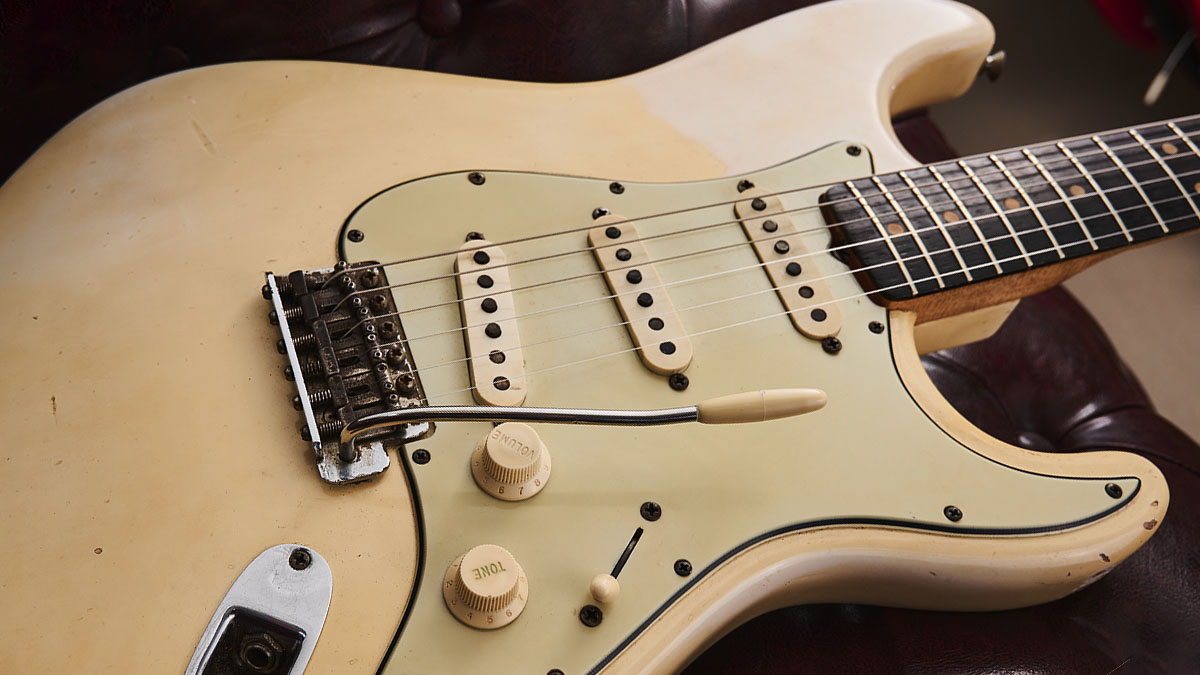
The late ’50s
The most obvious feature of ’50s Strats, their all-maple necks, lasted until nearly the end of the decade. And some believe that the last of the maple-necked Strats still represent an all-time high-water mark in Strat design.
“1957 is probably the most popular year for maple necks, mainly because of the V profile,” says Mike Long of the model’s enduring appeal. “Also, [the neck of] Clapton’s Blackie was a ’57,” he adds.
In some ways (the Clapton factor notwithstanding), the classic status of ’57 Strats is a bit surprising as they also feature that most ‘Marmite’ of neck profiles. Andrew Raymond says he’s become a fan of the ’57’s vintage V neck profile over time, but it wasn’t immediately comfortable.
“It took a lot of getting used to, but now I love it,” he says. “But by ’58 and ’59 Fender went to more of a rounded neck instead.”
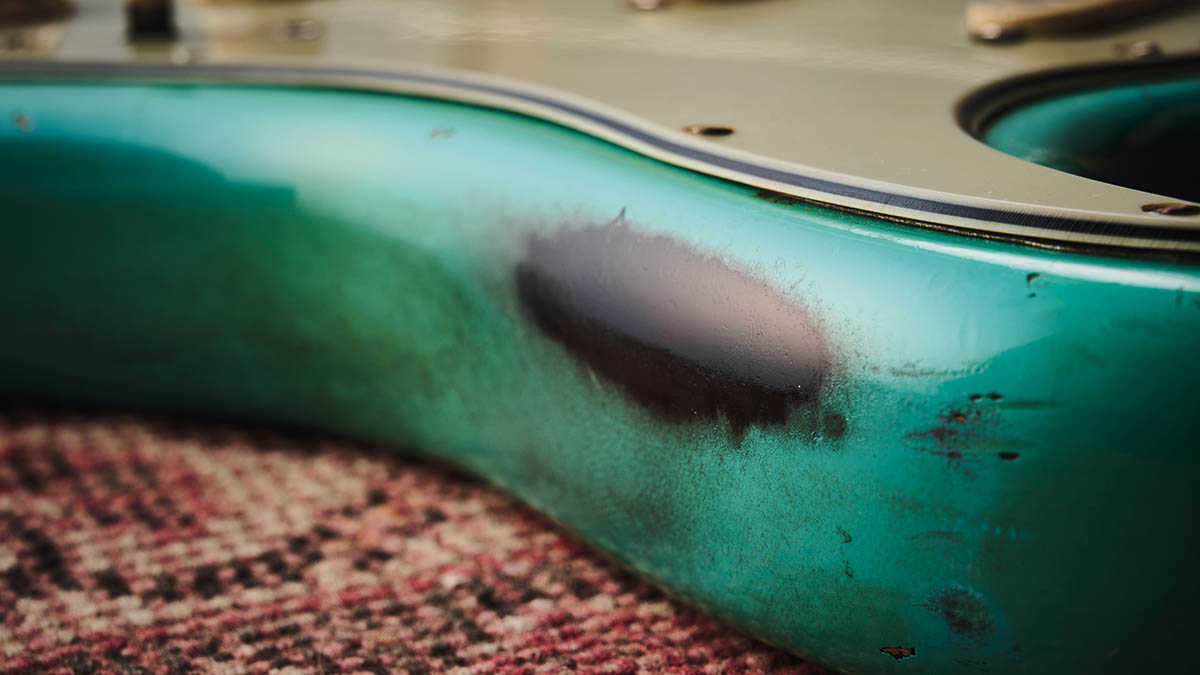
Huw Price says that whatever the neck profile, Fender was putting a lot of effort into making Strats as beautifully contoured and ergonomic as possible at that time.
“If you look at the Strats of that period, the bodies are so sculpted and the contours are so finely carved,” says Huw. “The tummy tuck at the top edge is just so thin compared with earlier and later bodies. Similarly, the arm chamfer comes down so far. So those Strats often have very, very heavily sculpted bodies that are just beautiful to behold.”
Huw also points to another big spec change that occurred during this period – a change that arguably marks the point at which the Strat transformed from a dainty, sparkling clean machine to a guitar capable of hitting harder.
When you combine alder with a maple neck and the slightly weaker pickups of the time, it all seems to gel together really nicely
Huw Price
“By 1957 or actually late 1956 Fender made the transition to alder bodies. The Strat bodies prior to that were built of ash and it does have a different tone. I think a lot of people would perhaps prefer the alder bodies because it just seems to have a little bit more midrange, a little bit more heft to it.
“When you combine alder with a maple neck and the slightly weaker pickups of the time, it all seems to gel together really nicely. By comparison, weak pickups with ash can sound really sparkly and beautiful and clear – but may not have the kind of the weight or body [to the sound] that a lot of players prefer in a Stratocaster.”
The rosewood era
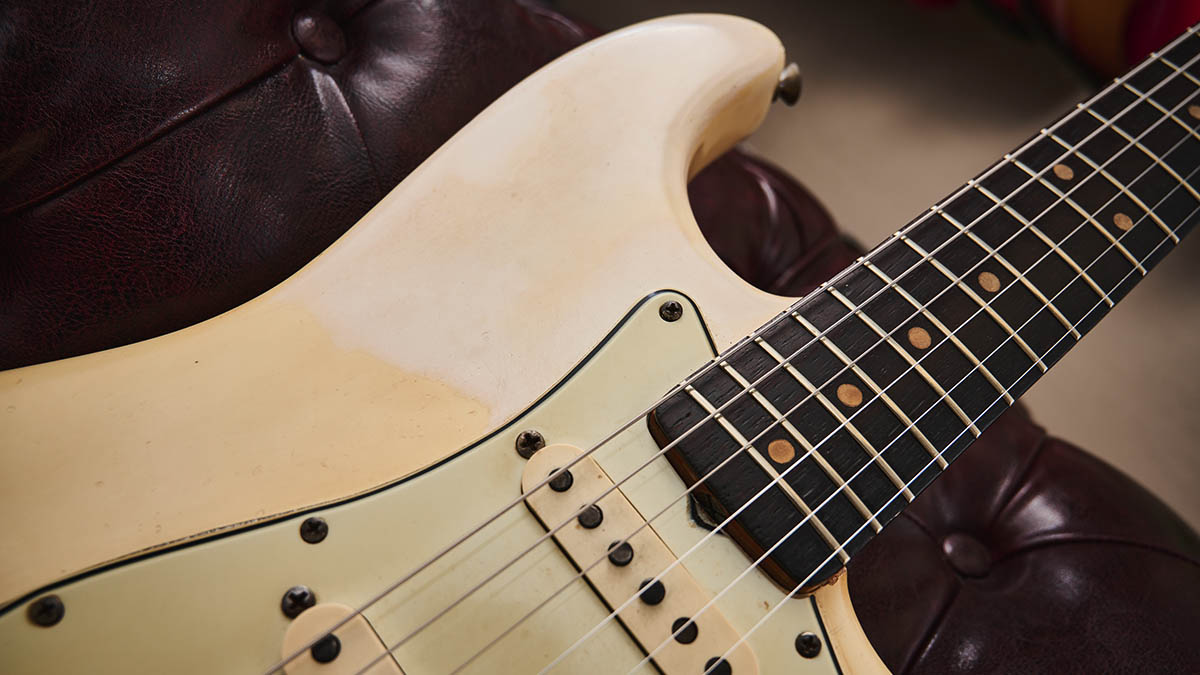
By 1959, the era of the maple neck was (for the time being) drawing to a close. The nitro surface of maple necks wore through too easily and, while today’s Relic fans may love that look, Fender likely wanted a more upmarket, durable look for the Strat.
Thus, the now classic combination of rosewood fretboard and alder body was adopted, marking the start of what many today consider the peak period of pre-CBS Strat design. The Strats of this era are so popular, in fact, that the exact year when the Strat hit its ’60s best is still keenly debated.
“1962 is a very popular year. Not sure why, but often if you’ve got a ’60, ’61 and a ’62 Strat on the market, then people will tend to go for the ’62,” says Mike Long of ATB Guitars. “1963 is also a very, very popular year. A lot of people say ’63 was the year when all the stars aligned at Fullerton and they got the perfect Strat in terms of the pickups, in terms of the neck profile and in terms of the sound. And then from ’64 onwards, it started to go downhill a little bit.
It’s difficult when you start making assumptions about what impact slab ’boards or veneer ’boards have on tone because, at the same time, the neck profiles were also changing
Huw Price
“A lot of people want a ’63 Strat – so many people play them and the image of a beat-up ’63 Strat is so cool. A perfectly mint ’63 Strat maybe isn’t quite so sought after, but a ’63 Strat that is a little bit beat up is a very desirable thing that people want. So I’d say ’63 is the most popular.”
Needless to say, the relative merits of spec changes made to the Strat during this period inspire a lot of debate, especially the difference between the thicker rosewood fingerboards of the earlier ‘slab-’board’ rosewood Strats versus the thinner, round-laminate ‘veneer ’boards’ that Fender adopted in August of 1962. Huw Price argues that the difference between them has to be considered in context of other changes being made to the Strat at that time.
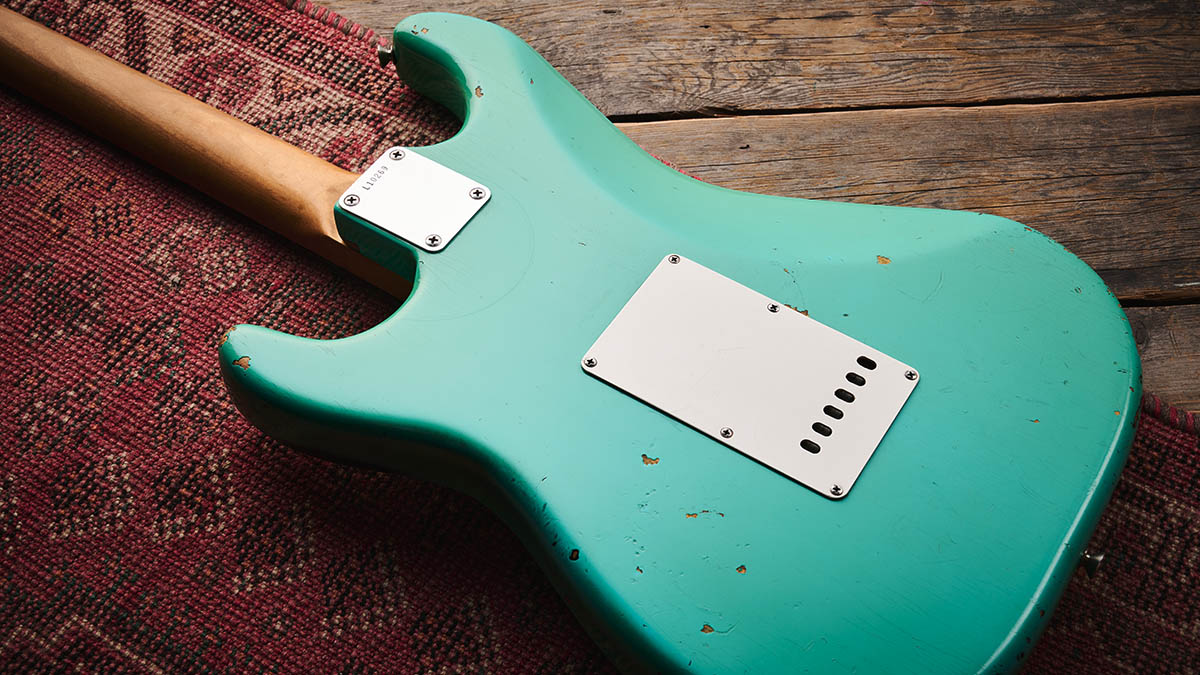
“It’s difficult when you start making assumptions about what impact slab ’boards or veneer ’boards have on tone because, at the same time, the [neck] profiles were also changing,” Huw explains. “So in 1960 to ’61 Fender was making really quite skinny necks, just as Gibson was going really skinny at that kind of ’61/’62 era before fattening up again in the mid-’60s.
“Personally, I like the veneer rosewood Strats best,” he adds. “I associate those guitars with a slightly fuller, warmer, fatter tone. But whether it’s attributable to the ’board or other factors, I don’t know, because around about ’62 Fender was also changing the pickup design again – they changed the pole piece diameter, which became smaller, and that meant they could get more windings on the coil.
“So the pickups got a little bit darker and more powerful… I think a lot of people are chasing what they perceive as that great big, fat, powerful Strat tone. And to my ears, that’s something you tend to find more with the guitars from 1962 to ’64.”
Post-CBS and beyond
It’s an article of faith among some Strat aficionados that the instruments made before the CBS Corporation bought Fender in January 1965 are the best – and there is (with caveats) a sizeable grain of truth in that. But opinions on that score are changing; Andrew Raymond says the reputation and value of some post-CBS Strats have risen in recent years.
“When I started collecting 30 years ago, the cut-off [for desirability] was 1965. Small headstock with a transition logo, maybe. Anything after that, forget it. Well, that’s all changed completely in the last 30 years. Particularly white Strats from 1968 – the Hendrix Strat – those go for fairly serious money. But the quality was different in that period.
“I mean, we’ve had a few and Huw Price is actually [servicing and setting one up] for us at the minute, which is a ’69 – a really cool guitar and it plays great. Okay, it’s not quite the same as an early ’60s Strat, but it’s still a really cool Strat. So, over a period of time, people’s perceptions and people’s ideas and people’s opinions have changed.
“To take that a bit further, when I started collecting, people wouldn’t touch a ’70s Strat with a bargepole. Now that’s different: early ’70s Strats are going for reasonable amounts of money. So I think it’s the whole period thing, but that period now is getting extended.”
Mike Long of ATB Guitars concurs, adding that it’s not true to say that Strats made in the (CBS-owned) decade between 1965 and 1975 are all duds – and it’s now widely accepted that such instruments often sound great and offer relatively good bang for your buck, should you be fortunate enough to be in a position to buy vintage.
“I think ’65s are good value for money at the moment and they can be really good,” Mike says, “especially if you get an early ’65. I’d agree with that. But from ’75 onwards, you start getting into quite dark waters. And by the time we get to the very late ’70s, to be honest, they’re often pretty bad and usually very heavy as well.”
That opinion was borne out by our experience when we interviewed guitarist Aynsley Lister about his working collection of early-to-mid-’70s Strats, which sounded incredible in his hands and lacked nothing as modern blues-rock tools. However, Huw Price says that you need to be aware of some key changes that Fender made to the Strat during the first decade of CBS ownership if you’re to understand the tonal character of these guitars.

“I think there are a couple of watershed changes that Fender made,” Huw says. “I think the first thing is that they changed the pickup magnet wire from heavy Formvar to plain enamel, which gives a somewhat different tone. So that’s a big deal.”
Mike Long of ATB agrees, saying: “I, and a lot of people who I speak to, favour the original black-bottom pre-CBS pickups with the Formvar wiring, before they change over to enamel. Those classic pickups from about ’55 through to early ’64 are fantastic. I think they’re unbeatable.”
But Huw Price adds that the later plain enamel pickups worked to better advantage when the Strat’s traditional bridge design changed to a new format.
“Essentially, the bridge assembly remained unchanged through until the late ’60s and early ’70s – pressed steel saddles with steel blocks, which were joined to the bridge plate with screws,” says Huw. “I mean, nothing really changed. But I think it’s interesting that they were putting less magnet wire onto the pickups by the ’70s, which made them cooler and presumably saved a little bit of money, too.
“The resulting pickups tended to sound brighter and glassier, and, in conjunction with steel blocks and steel saddles, they can give a Stratocaster quite a metallic tone. So that isn’t necessarily the best combination for some people.

“Then in the early ’70s, Fender went to a one-piece bridge,” Huw continues. “I don’t know what the block was made of – zinc or something like that – but, at the same time, they also went to Mazak [also known as zamak] saddles, which have a very different tone.
“People derided Mazak as ‘monkey metal’, but it’s exactly the same stuff that all those ABR-1 bridges and tailpieces were made from at Gibson [in the ’50s]. And Mazak has a really, really nice woody smooth tone, which arguably attenuates the top-end a little bit, which in combination with bright, underwound pickups can be a good thing.”
Conclusion
Our trawl through Strat history with the experts was illuminating, but you can’t escape the feeling that, as far as individual taste goes, there can be no one ‘ultimate’ Strat because each player has different ears, hands and needs and so each person’s notion of the ‘perfect’ Strat is inevitably different.
However, what is clear is that some historic versions of the Strat offer modern players a more relevant, all-round useful playing experience than others. Thus we can name 1970 to 1974 as a fertile period in which to find good-sounding, later-era vintage Strats. We can also name 1960 to 1964 as a particularly strong era in which to find punchy, midrange-rich Strats that perform incredibly well for the modern rock and blues player.
And, going back a couple of years further, many would find the alder-bodied late-’50s Strats just as compelling, if a little more springy and sprightly in character. Such guitars can also lay claim to being the most beautiful of all Strats, due to the amount of time lavished on sculpting and sanding their contours – a level of detailing unlikely to be found on reissues. Some purely aesthetic factors have also shaped which years of production are today regarded as classics.

“1958 Strats don’t tend to be that popular,” Mike Long says. “Now, there’s no difference in sound between ’57 and a ’58. The only differences are neck feel and the fact that 1958 was the first year of the three-tone sunburst – in that particular year, the sunburst was sprayed using a red that generally lasted the course of time. Whereas from 1959 through to late ’61, they used a different red in the three-tone sunburst that faded very quickly [which people tend to prefer today].
“So if you’re looking for a bargain in pre-CBS Strats, you should probably look for a ’58 because they’re not as popular as ’57 Strats. The unfaded finish makes them less desirable than both the two-tones that went before or the later three-tones that faded over time. And they’ve got a C-shaped neck rather than a V-shaped one. So they’re considered not as desirable as other ones, and hence prices aren’t up there. But they sound exactly the same.”
If you’re looking for a bargain in pre-CBS Strats, you should probably look for a ’58 because they’re not as popular
Mike Long
So, given all the variables outlined above, can we really identify an apex moment from the Strat’s history? As we’ve seen, so many aspects of our appreciation of the Strat hinge on subjective factors. But we can probably identify a year that combines an optimum combination of woods, good pickups and high build quality. Hence, we’d humbly suggest 1961 as our peak year.

Why? Well, firstly you have a slab rosewood ’board and, all things considered, we’d choose that over a veneer ’board if only because its potential to be refretted without damaging the maple beneath is higher than with the thinner veneer ’boards. Necks were slim in ’61, ensuring slinky playability, and as far as pickups go, no-one has ever suggested Rory Gallagher’s ’61 sounds bad, to say the least.
Also, after 1960, you have access to the finishes found on Fender’s first custom colour chart, from Olympic White to Foam Green, while the elegant contours of the body itself hadn’t yet become as squat and burly as they became in the latter half of the 60s. And given that half the world wants a ’62 or a ’63, we can’t help liking a ’61 Strat for being a breed just slightly apart.
Bonamassa’s hardtail ’55 is his favourite – he calls it the best Strat in the world
Huw Price
Finally, we’re tempted to introduce a final curveball feature to our ‘ultimate’ Strat: a hardtail. So many players, from Bonamassa to Robert Cray, rate the Tele-like resonance and clarity a hardtail Strat can offer, as Huw Price observes.
“Bonamassa’s hardtail ’55 is his favourite – he calls it the best Strat in the world,” says Huw. “And I have played that one. And Billy Gibbons, of course, has been using that hardtail Strat of his since the beginning, on tracks like La Grange – it’s a combination of Pearly Gates and his hardtail Strat. A hardtail Strat is taking you back more towards that Telecaster kind of approach.”
Are the alleged tonal benefits of going hardtail worth the loss of the whammy bar and all the shimmer and shake that’s such a hallmark of the Strat sound? Well, best argue that one out among yourselves…
Jamie Dickson is Editor-in-Chief of Guitarist magazine, Britain's best-selling and longest-running monthly for guitar players. He started his career at the Daily Telegraph in London, where his first assignment was interviewing blue-eyed soul legend Robert Palmer, going on to become a full-time author on music, writing for benchmark references such as 1001 Albums You Must Hear Before You Die and Dorling Kindersley's How To Play Guitar Step By Step. He joined Guitarist in 2011 and since then it has been his privilege to interview everyone from B.B. King to St. Vincent for Guitarist's readers, while sharing insights into scores of historic guitars, from Rory Gallagher's '61 Strat to the first Martin D-28 ever made.
“It holds its own purely as a playable guitar. It’s really cool for the traveling musician – you can bring it on a flight and it fits beneath the seat”: Why Steve Stevens put his name to a foldable guitar
“Finely tuned instruments with effortless playability and one of the best vibratos there is”: PRS Standard 24 Satin and S2 Standard 24 Satin review


![A black-and-white action shot of Sergeant Thunderhoof perform live: [from left] Mark Sayer, Dan Flitcroft, Jim Camp and Josh Gallop](https://cdn.mos.cms.futurecdn.net/am3UhJbsxAE239XRRZ8zC8.jpg)








